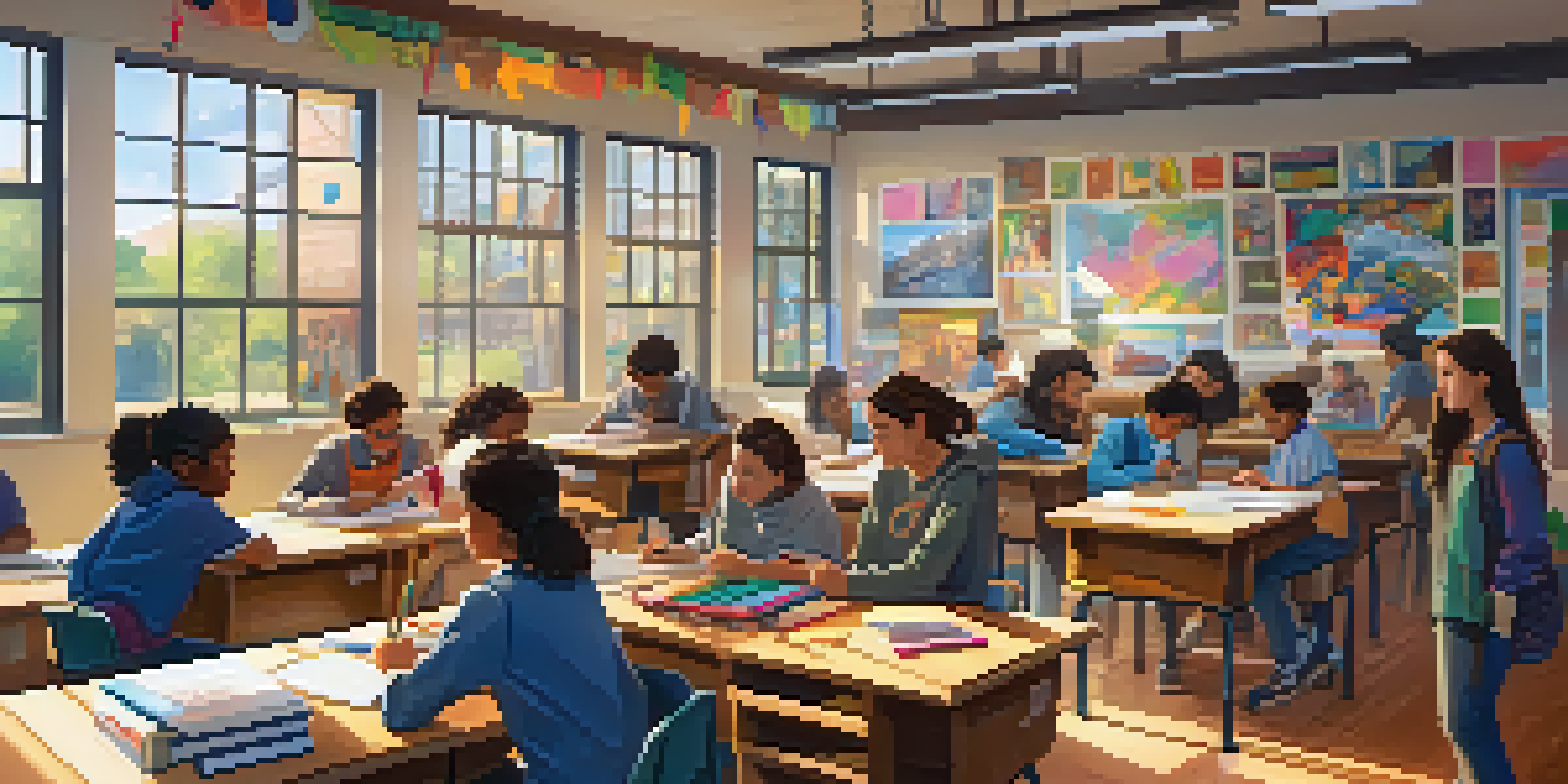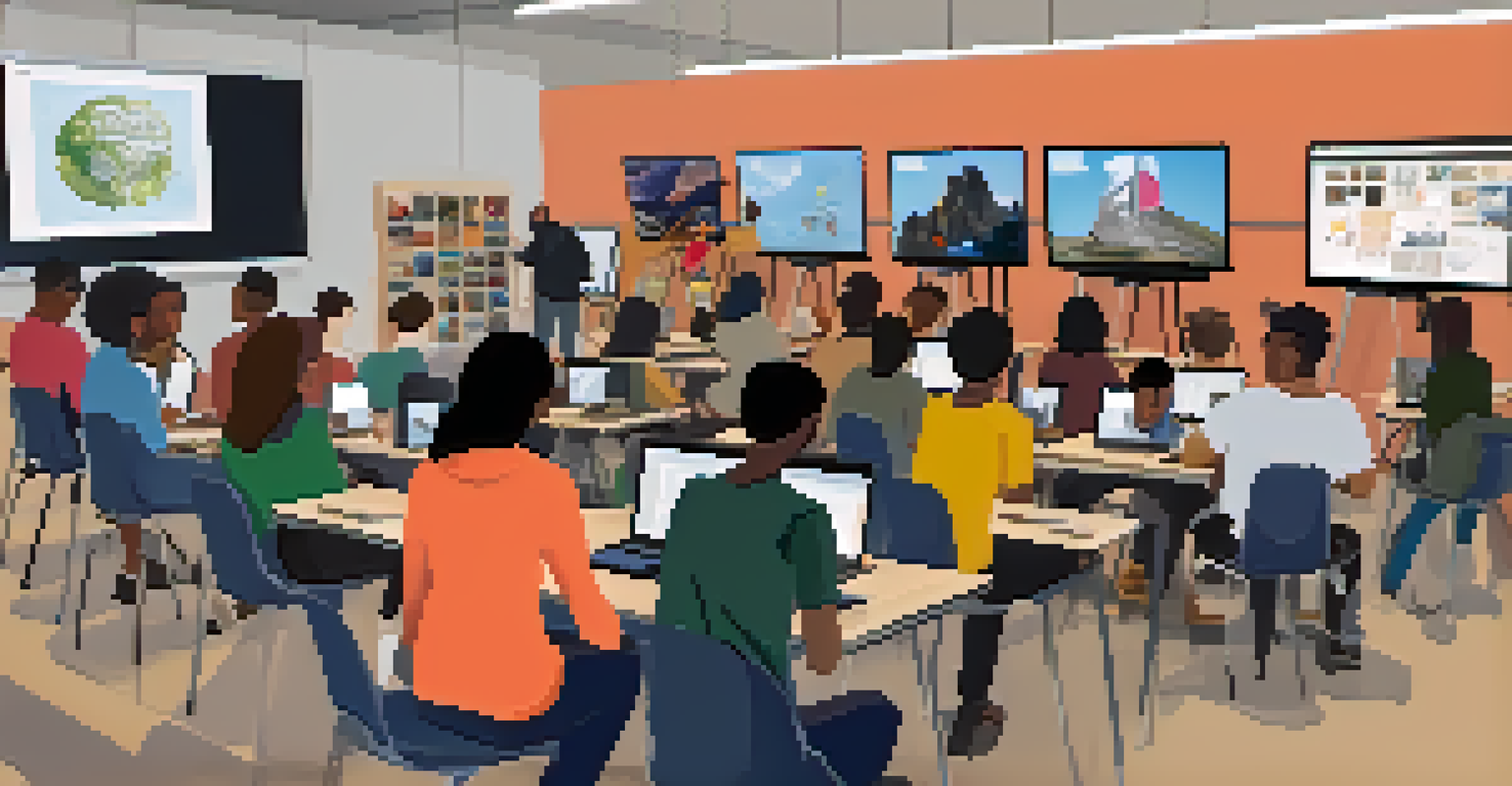The Power of Narrative in Interdisciplinary Learning

Understanding Interdisciplinary Learning and its Importance
Interdisciplinary learning merges different fields of study, creating a richer educational experience. By weaving together concepts from various disciplines, students can develop a more holistic understanding of complex problems. This approach encourages critical thinking, creativity, and adaptability, skills that are vital in today's interconnected world.
Stories are a communal currency of humanity.
For example, consider a project that combines science, literature, and art. Students might explore climate change through scientific research, write a narrative reflecting personal impacts, and create art that visualizes their findings. This integration not only makes learning more engaging but also fosters deeper retention of knowledge.
Ultimately, interdisciplinary learning prepares students for real-world challenges, where solutions are rarely found within the confines of a single discipline. By embracing this method, educators can cultivate well-rounded individuals equipped to tackle the complexities of modern society.
The Role of Narrative in Learning
Narrative serves as a powerful pedagogical tool, making information relatable and memorable. When students engage with stories, they often find themselves emotionally invested, which enhances comprehension and retention. This emotional connection is vital because it transforms abstract concepts into tangible experiences.

For instance, a historical event taught through storytelling can resonate more with students than just reading facts and dates from a textbook. By hearing about the experiences of individuals during that time, students can grasp the human element behind the events, fostering empathy and understanding.
Interdisciplinary Learning Enhances Skills
By merging different fields of study, interdisciplinary learning fosters critical thinking, creativity, and adaptability in students.
Moreover, narratives can bridge gaps between disciplines, allowing students to see the interconnectedness of knowledge. When students learn to craft their own narratives, they not only express their understanding but also develop their communication skills, which are essential in any field.
Examples of Narrative in Interdisciplinary Projects
One illustrative example of narrative in interdisciplinary learning is a project that combines biology and creative writing. Students might study the life cycle of a butterfly and then write a fictional story from the butterfly's perspective. This exercise not only reinforces their understanding of biological processes but also encourages creativity and narrative skills.
The more that you read, the more things you will know. The more that you learn, the more places you’ll go.
Another example is a collaboration between art and history, where students create visual presentations that tell the story of a particular era. By researching the historical context and then expressing it through art, they learn to appreciate the significance of cultural movements while honing their artistic abilities.
These projects demonstrate how narrative can act as a bridge between disciplines, enriching the learning experience and encouraging students to think critically and creatively across various domains.
Engaging Diverse Learners through Storytelling
Storytelling is an inclusive approach that can engage diverse learners in a classroom. Different students have varied learning styles, and narratives can appeal to auditory, visual, and kinesthetic learners alike. By incorporating stories, educators can create a more equitable learning environment where all students feel represented.
For example, using multimedia storytelling can cater to visual learners, while group discussions about narratives can benefit auditory learners. Meanwhile, kinesthetic learners can be engaged through role-playing activities that allow them to embody characters from the stories.
Narrative Makes Learning Relatable
Utilizing narrative as a pedagogical tool helps students emotionally engage with content, making complex ideas more memorable.
By recognizing the different ways students connect with narratives, educators can foster an environment where everyone has the opportunity to thrive. This inclusivity not only enhances learning outcomes but also builds a sense of community within the classroom.
The Impact of Technology on Narrative Learning
In today’s digital age, technology plays a crucial role in shaping how narratives are created and shared. Digital storytelling tools enable students to combine text, images, audio, and video to craft compelling narratives that resonate with their audience. This multimedia approach not only enhances engagement but also offers new avenues for expression.
For instance, students can use platforms like blogs, podcasts, or video editing software to share their stories, reaching broader audiences beyond the classroom. This encourages them to think critically about their content and how it will be received by others, fostering a deeper understanding of their subject matter.
Furthermore, technology allows for collaborative storytelling, where students can work together across distances. This collaboration not only enriches their narratives but also instills essential teamwork skills, preparing them for future endeavors in an increasingly interconnected world.
Challenges of Integrating Narrative in Learning
While the benefits of narrative in interdisciplinary learning are clear, challenges do exist. One significant hurdle is ensuring that the narrative remains educationally relevant and does not overshadow the core content. Educators must strike a balance between storytelling and the dissemination of factual information.
Additionally, some students may feel apprehensive about sharing their stories, fearing judgment or criticism. Creating a safe and supportive environment is essential to encourage all students to express themselves freely and authentically.
Technology Amplifies Storytelling Impact
Digital tools enhance narrative learning by allowing students to create and share multimedia stories that resonate with diverse audiences.
Finally, teachers may require professional development to effectively integrate narrative techniques into their teaching practices. By addressing these challenges head-on, educators can harness the full potential of narrative as a transformative learning tool.
Conclusion: Embracing Narrative for Future Learning
As we've explored, the power of narrative in interdisciplinary learning cannot be overstated. By weaving together stories and varied disciplines, educators can create a rich tapestry of learning that engages students on multiple levels. This approach not only enriches their educational experience but also prepares them for the complexities of the world outside the classroom.
Encouraging students to embrace storytelling fosters critical thinking, creativity, and collaboration—skills that are essential for success in any field. As we look to the future, integrating narrative into educational practices will be key to developing adaptable and innovative learners.

Ultimately, by prioritizing narrative in interdisciplinary learning, we can inspire the next generation to think beyond silos, connect ideas, and, most importantly, share their unique stories with the world.